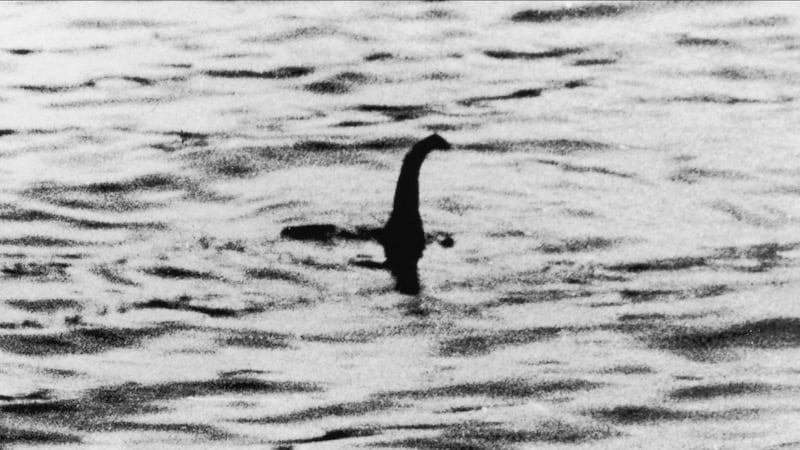One of the best-known things about Scotland is the Loch Ness Monster, affectionately nicknamed Nessie, reportedly a large creature resembling a plesiosaurus. Loch Ness is a large freshwater lake in the Scottish highlands, near Inverness.
Science is extremely sceptical about Nessie and the flimsy “evidence” that she actually exists rests mainly on disputed visual sightings and blurry photographs. Scottish nationalists also look askance at Nessie, claiming that she is used as a tool of English imperialism. However, Nessie lives on strongly in the public imagination and is undoubtedly a boon to the Scottish tourist industry.
The earliest report of a large exotic creature living in Loch Ness, actually in the River Ness at the northern end of the Loch, is found in the Life of St Columba, written in the sixth century. The Irish monk Columba, who was staying with the Picts, heard of a man attacked by a water beast when swimming in the River Ness, dragged underwater and drowned. Columba asked one of his followers to swim across the river, which he did, and the beast attacked him. Columba made the sign of the cross and commanded the beast to leave the man alone, whereupon the beast fled.

Stories about water beasts were common in medieval times. In modern times sightings of Nessie began in earnest in 1933 when a new road opened up skirting the lakeside, the A82 from Glasgow to Inverness, bringing an influx of workers and tourists into the area. On May 2nd, 1933, the Inverness Chronicle reported that a couple driving along the A82 saw a creature resembling a whale in the Loch. Soon afterwards another motoring couple saw Nessie crossing the A82 with a bloodied animal in her jaws. They reported that Nessie’s body was about 1.3m high and 7.5m long with a long narrow neck, slightly thicker than an elephant’s trunk, about 4.5m long.
Destination dining: 14 Irish restaurants well worth a journey
After the Hong Kong fire, Beijing confronts a grief it can’t easily police
USA, Australia and Qatar? The best and worst groups Ireland could get in Friday’s World Cup draw
The most expensive Irish homes sold in 2025: From a seaside haven to a record-breaking penthouse
On April 24th, 1934, the Daily Mail published a photograph of a plesiosaurus-like creature in Loch Ness, showing the head and neck. The photograph, reportedly taken by a gynaecologist called Robert K Wilson, became known as the Surgeon’s Photograph. Most experts now agree that this photograph is a hoax. Other “sightings” and photographs of Nessie are unclear and can be credibly explained as misinterpretations of sightings of otters, birds, large eels or even bits of wood.
Many sightings of Nessie describe a creature similar to a plesiosaurus, giant aquatic reptiles that lived contemporaneously with the dinosaurs and are believed to have gone extinct 65 million years ago. One big problem with the plesiosaurus hypothesis is the question of how some of these animals could survive in Loch Ness while all the others died out millions of years ago.
A recent large-scale study found lots of eel DNA. So, if there is anything in the reported sightings of a large strange creature in the loch, the most likely candidate is a giant eel
Another potential problem is that the plesiosaurs lived in saltwater, whereas Loch Ness is freshwater. Although some fishes are able to live in both freshwater and saltwater (for example, salmon), freshwater fish generally will not thrive in saltwater and vice versa. However, recent studies by Georgina Bunker and others (Cretaceous Research, Vol. 140, 2022) have shown that plesiosaurs apparently lived happily in freshwater in Moroccan rivers in the Early Cretaceous period, 145-100 million years ago.
A recent large-scale study of DNA of lifeforms in Loch Ness by the University of Otago found no profiles that match a plesiosaurus. However, the study found lots of eel DNA. So, if there is anything in the reported sightings of a large strange creature in the loch, the most likely candidate is a giant eel.
I was surprised to learn recently that Scottish nationalists are not Nessie fans. In 2022 the Scottish Nationalist Party (SNP) produced a social studies school lesson plan to teach 11-14 year-olds. This claims that Nessie symbolises the ambivalent position Scotland holds in the union between Scotland and England, portraying the stereotype that, until the Act of Union, Scotland was a wilderness compared to England, but that the modern state can control these primitive tendencies. I don’t know about that but the charge could be useful to the SNP when lobbying for another independence referendum.
If Nessie doesn’t exist, why are eyewitness accounts of the Loch Ness Monster still common? The answer is likely to be “expectant attention”, a psychological phenomenon that happens when people who expect/want to see something misinterpret visual cues as the thing that they expect/want to see.
William Reville is an emeritus professor of biochemistry at UCC
















